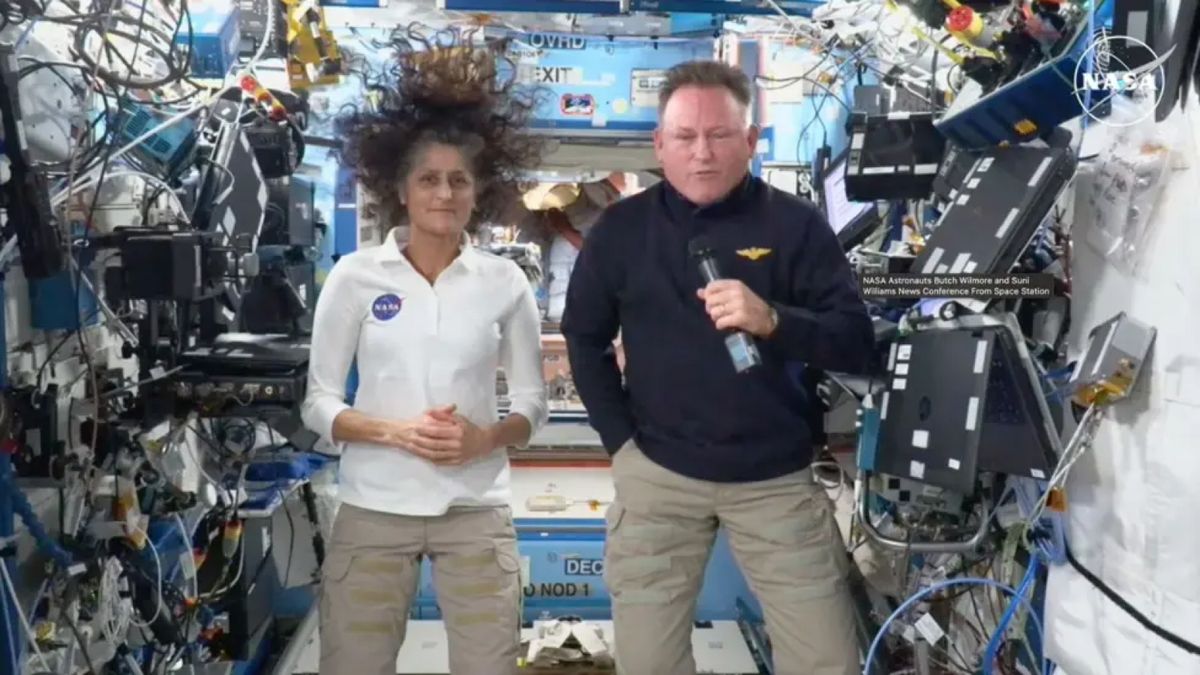
The astronauts aboard Boeing’s Starliner are approaching the conclusion of their extended mission in Earth orbit, all while addressing speculation surrounding their supposed “stranded” status.
NASA‘s Suni Williams and Butch Wilmore embarked on a journey to the International Space Station (ISS) last June, marking the initial crewed test flight of Boeing’s Starliner spacecraft. Initially, they anticipated spending about 10 days in orbit; however, technical difficulties with the spacecraft’s thrusters delayed their docking process, necessitating a thorough investigation by NASA and Boeing.
Ultimately, Starliner returned to Earth without its crew, leading to a reshuffling of astronaut assignments. Williams and Wilmore were then integrated into SpaceX‘s Crew-9 mission, which reached the ISS in late September. Their inclusion in Crew-9 extended their stay in space until Crew-10 arrived to relieve them, coinciding with Crew-9’s planned six-month rotation.
Since their arrival, media narratives have frequently discussed the supposed plight of the “stranded astronauts.” Despite this, Williams and Wilmore have diligently conducted their responsibilities aboard the ISS, with Williams notably breaking the record for the most cumulative spacewalking hours by a female astronaut.
The duo’s circumstances attracted further attention after President Donald Trump attributed responsibility to the Biden administration for neglecting the two astronauts, urging SpaceX CEO and Trump advisor Elon Musk to assist in their rescue.
In December, NASA announced a delay for the Crew-10 launch, rescheduling it to no earlier than late March due to the finalization of a new Dragon spacecraft for the mission. This postponement also affected the return of Williams and Wilmore, who will return with Crew-9’s astronauts, NASA’s Nick Hague and Russian cosmonaut Aleksandr Gorbunov.
Delays in the production of Crew-10’s new Dragon spacecraft have prompted NASA to change the assigned spacecraft for a more readily available option. This announcement came shortly after the exchange between President Trump and Musk, during which Musk echoed the misleading “stranded astronauts” narrative. Williams and Wilmore hope to shift the conversation away from that characterization.
In a recent interview with CNN’s Anderson Cooper, they clarified that mission extensions, such as lengthening their stay from 10 days to nearly 10 months, are part of the operational dynamics of space missions.
“We arrive prepared and dedicated. That is the essence of your human spaceflight program: to account for every conceivable contingency,” Wilmore articulated to Cooper. “We don’t feel abandoned. We don’t feel trapped. We don’t feel stranded.”
Wilmore emphasized that all astronauts on the ISS can return to Earth promptly in emergencies. “Returning home isn’t a privilege reserved for us unless there’s a medical emergency or significant anomaly,” he explained.
“Help us reshape the narrative,” Wilmore urged Cooper. “Let’s promote the idea of ‘prepared and dedicated.’ ”
Both astronauts have significant prior experience aboard the ISS and expressed their enjoyment of their current mission. “Every time you enter through the hatch, you’re reminded of the wonder of floating again, and I believe we both adapted quite efficiently,” Williams shared during the CNN segment.
She also mentioned that concluding this mission will bring mixed emotions: “I suspect we might feel a tinge of sadness when the sensation of being in space comes to an end.”
NASA is currently eyeing no earlier than March 12 for the launch of the Crew-10 mission, which will use the Crew Dragon capsule Endurance instead of SpaceX’s new Dragon model. A typical crew overlap at the space station lasts approximately one week; therefore, Wilmore anticipates Crew-9’s return to Earth around March 19.
This article was originally published on Space.com.
Test Your Knowledge on Human Spaceflight: How well do you understand our ventures into space?









